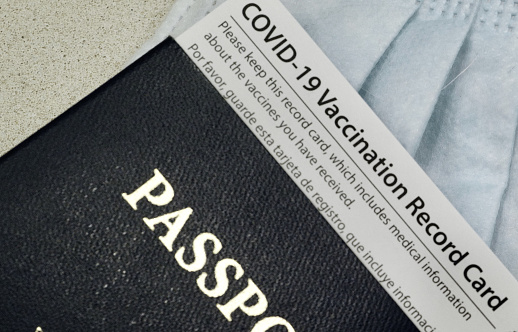
The White House recently announced that beginning May 12, 2023, the COVID-19 vaccination requirements for entry to the United States will no longer apply to nonimmigrant international air travelers. In addition, the Department of Homeland Security announced that it would end the COVID-19 vaccination requirements as of May 12, 2023 for non-U.S.


 Seyfarth Synopsis: On April 25, ICE announced its 13th extension, this time for a six-month period (until October 31, 2022), of the I-9 compliance flexibility rules relating to Form I-9. There is no substantive change in this extension of the policy, allowing for the “in-person” exemption (of identity and work authorization document review), benefiting certain employees and offering flexibility for companies that are phasing back in employees. While we are confident that the government is considering a permanent virtual option, we continue to advise employers to work under the assumption that anyone initially verified using the virtual flexibility will be required to conduct an in-person update as employees return to the workplace, especially in cases where identity was not verified (i.e. those that used the fax/email option).
Seyfarth Synopsis: On April 25, ICE announced its 13th extension, this time for a six-month period (until October 31, 2022), of the I-9 compliance flexibility rules relating to Form I-9. There is no substantive change in this extension of the policy, allowing for the “in-person” exemption (of identity and work authorization document review), benefiting certain employees and offering flexibility for companies that are phasing back in employees. While we are confident that the government is considering a permanent virtual option, we continue to advise employers to work under the assumption that anyone initially verified using the virtual flexibility will be required to conduct an in-person update as employees return to the workplace, especially in cases where identity was not verified (i.e. those that used the fax/email option).  Late in the day, on May 26, Immigration and Customs Enforcement (ICE) announced a 90-day extension for remote Form I-9 inspection, allowing flexibilities to continue through August 31, 2021.
Late in the day, on May 26, Immigration and Customs Enforcement (ICE) announced a 90-day extension for remote Form I-9 inspection, allowing flexibilities to continue through August 31, 2021. Seyfarth Synopsis: This announcement extends the flexibilities in rules relating to Form I-9 compliance that was initially granted last year. It also expands the scope of the “in-person” exemption benefit to certain employees, and offers flexibility for companies that are phasing back in employees, as doing so will no longer trigger the in-person requirement for all new hires. While an improvement in the overall dialogue, the guidance leaves uncertainty regarding the end of I-9 virtual flexibility, and as such, employers should consider moving away from the virtual completion model while continuing to heavily document current practices.
Seyfarth Synopsis: This announcement extends the flexibilities in rules relating to Form I-9 compliance that was initially granted last year. It also expands the scope of the “in-person” exemption benefit to certain employees, and offers flexibility for companies that are phasing back in employees, as doing so will no longer trigger the in-person requirement for all new hires. While an improvement in the overall dialogue, the guidance leaves uncertainty regarding the end of I-9 virtual flexibility, and as such, employers should consider moving away from the virtual completion model while continuing to heavily document current practices.